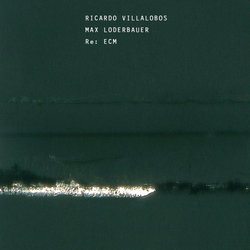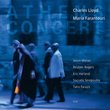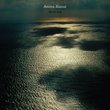| All Artists: Ricardo Villalobos, Max Loderbauer Title: Re: ECM Members Wishing: 6 Total Copies: 0 Label: ECM Records Original Release Date: 1/1/2011 Re-Release Date: 9/6/2011 Genres: Dance & Electronic, Jazz, Classical Styles: Electronica, Historical Periods, Classical (c.1770-1830) Number of Discs: 2 SwapaCD Credits: 2 UPC: 602527586816 |
Search - Ricardo Villalobos, Max Loderbauer :: Re: ECM
 | Ricardo Villalobos, Max Loderbauer Re: ECM Genres: Dance & Electronic, Jazz, Classical
Re: ECM presents sound-structures by Ricardo Villalobos and Max Loderbauer based on ECM recordings by Christian Wallumrød, Alexander Knaifel, John Abercrombie, Miroslav Vitous, Louis Sclavis, Wolfert Brederode, Paul G... more » |
Larger Image |
CD Details
Synopsis
Product Description
Re: ECM presents sound-structures by Ricardo Villalobos and Max Loderbauer based on ECM recordings by Christian Wallumrød, Alexander Knaifel, John Abercrombie, Miroslav Vitous, Louis Sclavis, Wolfert Brederode, Paul Giger, Enrico Rava/Stefano Bollani/Paul Motian, Arvo Pärt and Bennie Maupin. Developed and produced at Laika Studio in Berlin in the autumn of 2009, this double album is the outcome of a long engagement with the label's music on the part of Ricardo Villalobos. The Chilean-born electronic music producer and DJ, a long-time follower of Manfred Eicher's jazz and new music productions, began experimenting several years ago with the integration of ECM titles into the flow of his DJ-sets in the clubs. "It started with Arvo Pärt's Tabula Rasa and went on with music of Alexander Knaifel and others", he recalls. Watching the dancers on the club floor, Villalobos concluded that "if one combines the functionality of reduced electronic structures with the living textures of ECM productions, it ignites new passions on a subliminal level....The most important thing is to harmonize these two worlds, without them aspiring to mutually deactivate each other, to keep both - the organic and the electronic - in balance." To explore further the possible relationships between ECM's space-conscious musical sound-world and the sonorities of the new electronic music, Villalobos invited Max Loderbauer (well-known, in techno circles, for his work with Sun Electric, Chica and the Folder, and the Moritz von Oswald Trio) to collaborate on a project addressing ECM music. With live mixing board and modular synthesizer as their instruments, the duo engaged with ECM's atmospheric spectrum, interacting with the label's catalog in unorthodox ways: "We chose specific ECM productions that offered parts where instruments, voices/choirs, atmospheres, were self-sufficient and isolated in the room," the duo report in the album's liner notes. "We also used pauses, gaps, and the microphonic impressions of the rooms as source material. To begin with, these sparsely orchestrated parts were worked into loops. We then organized our machines in the studio in such a way that we could use the predetermined loop-elements as impulses and primers for all electronically generated sounds. In this way the sonic treatment was always controlled by the original parts of the original recordings...The arrangement of the equipment can almost be compared to a band situation, because the individual components of the system react to each other and sometimes even enter an improvisational mode. Adjusted in a certain way the machines start composing by themselves, by means of communicating algorithms." ECM has a long history of working with electronically-generated sound at the most diverse levels - from the Music Improvisation Company to Kurtágonals, from Karlheinz Stockhausen to Nils-Petter Molvaer's Khmer remixes. On Re: ECM a selection of the label's recordings are taken apart, reassembled, and reworked into new compositions through electronic processing. For Villalobos, this is also a token of affection, and he and Loderbauer hope that the present album will bring the original recordings to the attention of a new audience. Manfred Eicher visited the duo in Berlin in the early stages of their recording process, and later supervised the mastering of the music in Munich. "Manfred understood that our approach to his music is extremely respectful and that it actually works, and so encouraged us to proceed with the project, offering us complete freedom in choosing the original songs. We believe that we were able to get to the heart of this space-using music with very little compression, this characteristic ECM-aesthetic, with our adaptations. On Re: ECM, the concept of space is being transformed into a new, elastic, breathing, almost surreal timelessness. Fusing our electronic system with the acoustic recordings of the original productions, which contain the entire information of spatial atmospheres, a completion is taking place, returning those qualities which electronic music - in its very specific way - is missing." 2-CD in slipcase includes German-English booklet with liner notes by Ricardo Villalobos and Max Loderbauer, and full details of all original sound-sources
Similar CDs
| Charle Lloyd Athens Concert Genres: Jazz, Classical Label: ECM Records | |
| Amina Alaoui Arco Iris Genres: Jazz, Pop Label: ECM Records | |

 Track Listings (9) - Disc #1
Track Listings (9) - Disc #1
